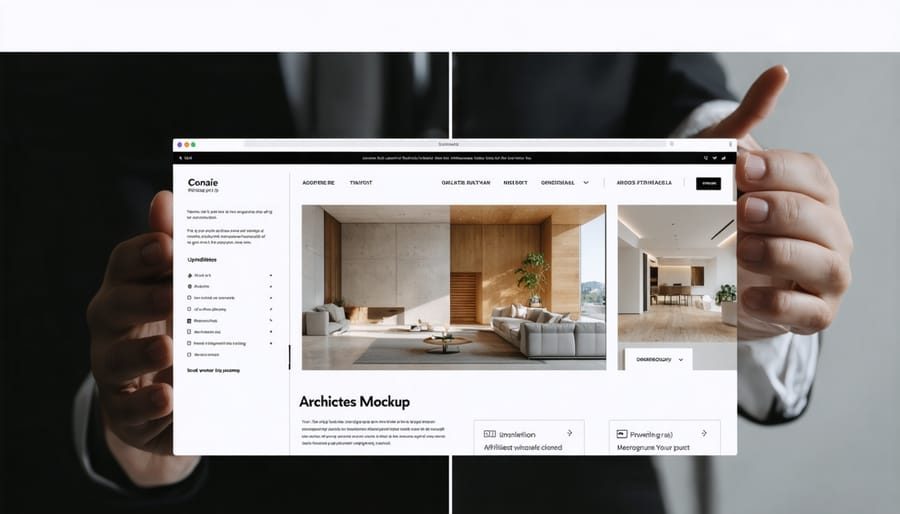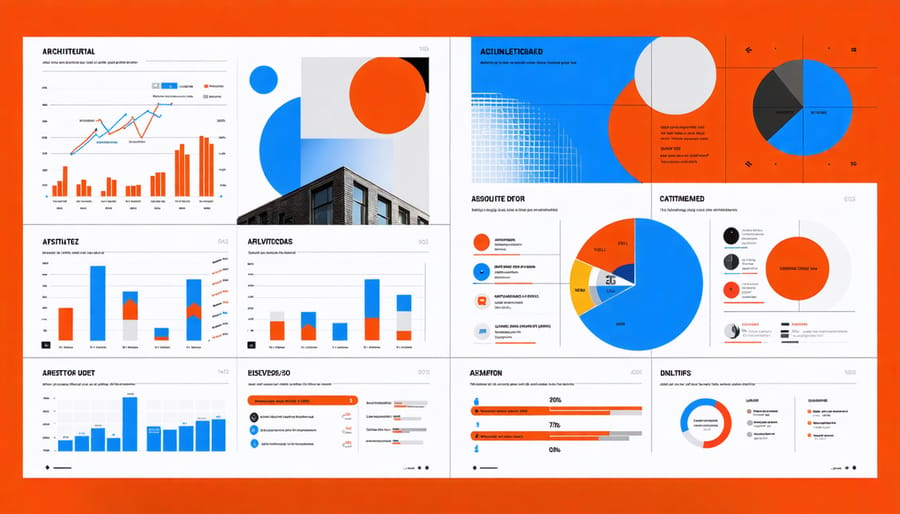Transform your architectural practice by implementing strategic profitable affiliate revenue streams through carefully selected building product partnerships. Leading firms leverage specialized platforms like Chery Industrial Coupon Code to generate substantial passive income while maintaining professional integrity.
The intersection of architecture and affiliate marketing presents a sophisticated opportunity for design professionals to monetize their expertise and specification authority. By strategically partnering with premium building material manufacturers, sustainable technology providers, and innovative design software companies, architectural firms can create valuable revenue channels that complement their core services.
This comprehensive guide examines how forward-thinking architectural practices are implementing affiliate marketing programs that align with professional standards while delivering meaningful value to clients. We’ll explore proven strategies for selecting partners, structuring commission arrangements, and maintaining transparency – essential knowledge for firms seeking to diversify their revenue streams in today’s competitive market.
Understanding Architectural Affiliate Marketing
Common Affiliate Opportunities in Architecture
Architectural firms can engage in various lucrative affiliate partnerships that align with their professional services and expertise. Building product manufacturers often offer affiliate programs where firms can earn commissions by recommending specific materials, fixtures, or systems to their clients. These partnerships typically range from structural components to finishing materials.
Software companies providing CAD, BIM, and project management tools frequently maintain affiliate programs that reward architects for referring other professionals. These opportunities are particularly valuable as they naturally integrate with daily workflows and professional recommendations.
Professional development platforms and educational resources present another avenue for affiliate partnerships. Architects can earn commissions by recommending certification courses, specialized training programs, or technical workshops to their network.
Sustainable building product manufacturers and green building certification organizations often seek affiliate partners among architectural firms. These partnerships can include promoting eco-friendly materials, energy-efficient systems, or sustainability certification programs.
Furniture and interior design product manufacturers frequently offer affiliate programs that complement architectural services, allowing firms to earn additional revenue when specifying particular brands or product lines in their designs.
Building Product Partnerships
Building successful product partnerships requires a strategic approach to connecting with manufacturers and suppliers in the architectural industry. Start by identifying reputable manufacturers whose products align with your firm’s design philosophy and quality standards. Focus on establishing relationships with companies that offer sustainable materials, innovative building solutions, and products frequently specified in your projects.
When approaching potential partners, emphasize your firm’s expertise, project portfolio, and influence within the industry. Many manufacturers offer specialized architect partnership programs that include preferential pricing, early access to new products, and commission structures for specifications that lead to sales.
Key considerations for successful partnerships include:
– Maintaining transparency with clients about affiliate relationships
– Documenting partnership agreements thoroughly
– Ensuring products meet local building codes and regulations
– Regular evaluation of partner product performance
– Understanding manufacturer support and warranty programs
Remember to diversify your partnerships across different product categories to provide comprehensive solutions for your projects. This approach not only creates multiple revenue streams but also strengthens your firm’s ability to deliver optimal specifications for clients while maintaining professional integrity and independence in product selection.

Creating a Strategic Affiliate Program
Identifying Valuable Partnership Opportunities
Selecting the right affiliate partners is crucial for architectural firms looking to maintain their professional reputation while developing additional revenue streams. The process begins with a thorough evaluation of potential partners’ values, product quality, and market reputation. Focus on companies that manufacture or distribute high-quality architectural products, software solutions, or professional services that your clients regularly need.
Start by identifying partners whose offerings directly address your clients’ pain points. Consider manufacturers of sustainable building materials, innovative design software, or specialized architectural tools that you already use and trust. These natural alignments create authentic promotional opportunities that maintain your firm’s credibility.
Evaluate potential partners based on several key criteria: product quality, customer service reputation, commission structure, and promotional support. Look for companies that provide comprehensive product documentation, technical support, and professional marketing materials that align with your firm’s standards.
Prioritize partnerships with brands that share your commitment to sustainability, innovation, and professional excellence. This alignment ensures that promotional activities feel genuine and add value to your client relationships rather than compromising them.
Before finalizing any partnership, conduct due diligence by:
– Reviewing partner track records and industry reputation
– Testing products or services firsthand
– Examining their affiliate program terms and conditions
– Assessing their promotional requirements and restrictions
– Verifying their payment reliability and reporting systems
Remember that fewer, high-quality partnerships often yield better results than numerous superficial affiliations. Focus on building long-term relationships with partners whose products or services you can confidently recommend to your clients, ensuring that every promotion aligns with your firm’s professional standards and expertise.
Compliance and Disclosure Requirements
Architectural firms engaging in affiliate marketing must adhere to strict compliance and disclosure requirements to maintain professional integrity and meet legal obligations. The American Institute of Architects (AIA) Code of Ethics mandates transparency in all business relationships, including affiliate partnerships. Firms must explicitly disclose any financial interests or compensation received from product recommendations or referrals.
When promoting building materials, software, or services, architects must include clear affiliate disclaimers on their websites, blogs, and social media platforms. These disclaimers should be prominently displayed and easily accessible to clients and readers. The Federal Trade Commission (FTC) guidelines require that such disclosures be “clear and conspicuous” and placed near the promotional content.
Professional liability considerations also come into play. Architects must ensure that affiliate relationships don’t compromise their duty to provide unbiased professional advice. Documentation of affiliate partnership decisions, including the vetting process for recommended products and services, should be maintained to demonstrate due diligence.
State licensing boards may have additional requirements regarding commercial relationships and fee structures. Firms should review their local regulations and consult with legal counsel to ensure compliance with state-specific rules. Many jurisdictions require separate disclosures for affiliate income in professional service agreements and project documentation.
To maintain ethical standards, architectural practices should develop internal policies governing affiliate partnerships, including criteria for product selection, disclosure protocols, and conflict-of-interest guidelines. Regular audits of affiliate programs help ensure ongoing compliance and maintain professional credibility.
Implementation and Best Practices
Digital Integration Strategies
Integrating affiliate promotions into architectural websites requires a strategic approach that balances professional integrity with revenue generation. Successful digital integration strategies begin with thoughtful content placement across multiple digital touchpoints.
Portfolio showcases present natural opportunities for affiliate integration, particularly when discussing materials, products, or software used in featured projects. Consider embedding contextual links within project descriptions or creating dedicated resource pages that highlight recommended tools and materials. Technical blogs and case studies can incorporate affiliate products organically by demonstrating their practical applications in real-world scenarios.
Professional architectural websites should implement clear disclosure policies regarding affiliate relationships while maintaining editorial independence. Utilize specialized plugins and tracking systems designed for architecture-focused content management systems to monitor performance metrics and optimize placement strategies.
Interactive elements such as 3D visualization tools, material libraries, and specification sheets can seamlessly incorporate affiliate products without disrupting the user experience. Create dedicated sections for product reviews and technical evaluations that provide genuine value while naturally featuring affiliate partnerships.
Remember to regularly analyze user engagement data and adjust integration methods based on audience response. This ensures that affiliate content enhances rather than detracts from the website’s professional authority and user experience.

Client Communication Approaches
When presenting affiliate recommendations to clients, transparency and professionalism are paramount. Begin by establishing clear boundaries between your architectural expertise and affiliate partnerships. Frame recommendations as value-added suggestions that complement your primary services, rather than sales pitches.
Create a structured approach for introducing affiliate products or services during relevant project phases. For example, when discussing building materials, naturally integrate recommended products that align with the project’s specifications and sustainability goals. Always lead with technical merit and project suitability before mentioning any affiliate relationship.
Document your affiliate relationships in your client communications policy and include appropriate disclosures in your service agreements. This demonstrates ethical business practices and builds trust. Consider developing a standardized presentation format that highlights product specifications, performance data, and relevant case studies alongside transparent affiliate disclosure statements.
Use project-specific context to justify recommendations. Rather than generic promotions, focus on how specific products or services address unique project challenges. Maintain detailed records of all affiliate-related communications and recommendations for compliance and transparency purposes.
Remember to respect client autonomy in decision-making. Present affiliate recommendations as options within a broader selection of choices, emphasizing that clients are free to source materials and services through their preferred channels. This approach maintains professional integrity while maximizing the potential benefits of affiliate partnerships.
Measuring Success and ROI
Effective measuring success and ROI in architectural affiliate programs requires a systematic approach to tracking key performance indicators (KPIs). Essential metrics include conversion rates, click-through rates (CTR), average commission value, and total revenue generated through affiliate partnerships.
Successful firms implement comprehensive analytics systems to monitor both quantitative and qualitative metrics. Track affiliate-driven leads through unique referral codes and dedicated landing pages to accurately attribute conversions. Monitor the performance of different product categories and affiliate partners to optimize your program strategy.
Consider these critical performance indicators:
– Conversion rate by affiliate partner
– Revenue per click (RPC)
– Customer lifetime value (CLV) from affiliate-referred clients
– Return on ad spend (ROAS)
– Partner engagement rates
– Commission structure effectiveness
Establish monthly reporting protocols to evaluate program performance against predetermined benchmarks. Use advanced tracking tools like affiliate management platforms to automate data collection and analysis. Regular performance reviews help identify top-performing partners and products, allowing for strategic adjustments to maximize ROI.
Remember to factor in operational costs, including platform fees, commission structures, and administrative overhead when calculating true program profitability. This comprehensive approach to measurement ensures sustainable growth and profitable partnerships within your architectural affiliate program.

Implementing affiliate marketing in architectural practices represents a significant opportunity for firms to diversify their revenue streams while maintaining professional integrity. The key to success lies in selecting partnerships that align with your firm’s values and expertise, whether through building material suppliers, software providers, or sustainable product manufacturers.
To begin implementing an affiliate program, start by auditing your current vendor relationships and identifying potential partners whose products you already recommend. Develop a clear strategy that includes content creation, such as detailed product reviews, case studies, and technical specifications that provide value to your clients while naturally incorporating affiliate recommendations.
Remember to maintain transparency with your clients about affiliate relationships and ensure all promotions comply with professional regulations and ethical guidelines. Document your affiliate marketing policies and procedures, and regularly review performance metrics to optimize your program.
Consider starting small with one or two carefully chosen partnerships before expanding. Focus on products and services that genuinely benefit your clients and enhance your practice’s reputation. Implement tracking systems to monitor conversions and maintain detailed records for both financial and professional purposes.
Success in architectural affiliate marketing requires a balanced approach that prioritizes professional integrity while maximizing revenue potential. By following these guidelines and maintaining focus on quality partnerships, firms can create sustainable additional income streams that complement their core architectural services.

